Sagrada Família in Barcelona
A view of the columns with light flowing downward.
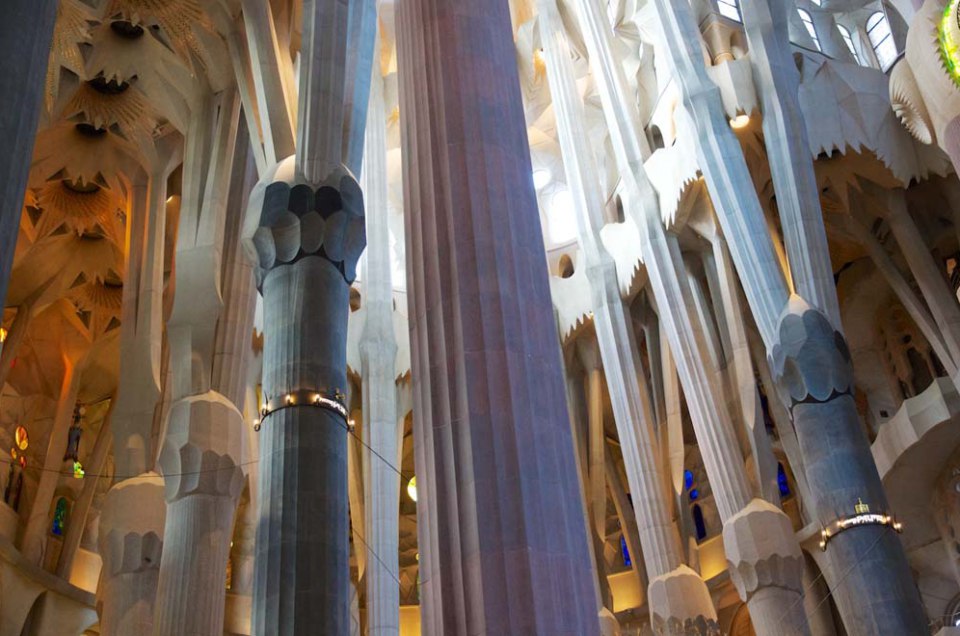
A view of the columns with light flowing downward.
The Sagrada Família contains 22 kinds of stone, including six used at the time construction began and chosen based on three properties: durability, resistance and color. The first kind used was local Montjuïc stone, which makes up the bulk of the exterior, including major features of the passion and nativity facades. Since the closure of the Montjuïc stone quarries in the 20th century, builders have had to source stone from donations, demolitions and stockpiles. Gaudí chose specific types of stone for certain features, including the interior columns.
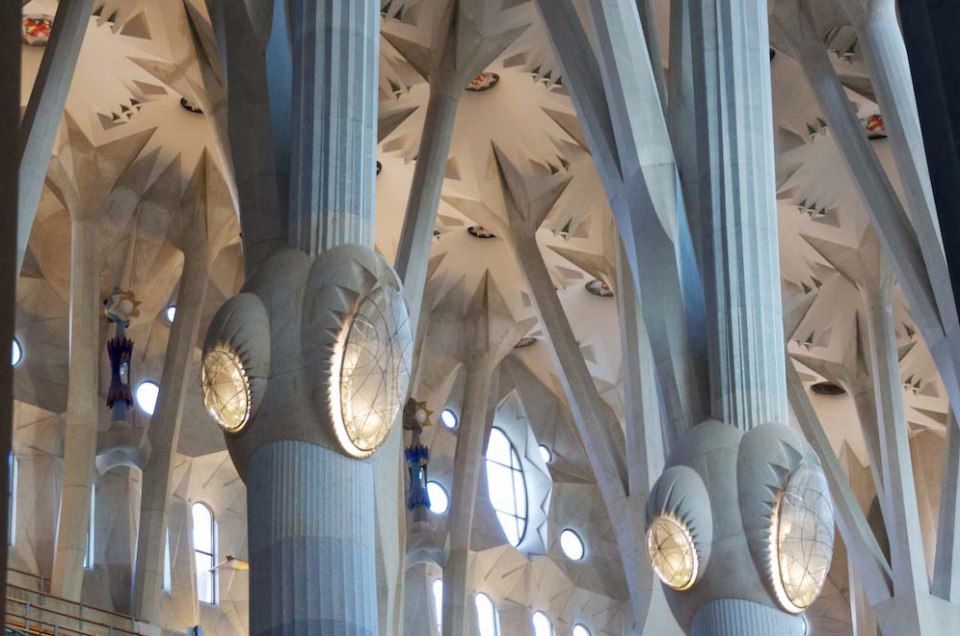
Columns also contain complex geometries as they move from floor to ceiling. Note how the shapes evolve from bottom to top.
Columns were designed with nature in mind, and branch out as they reach toward the ceiling to provide distributed support. The sense is of being inside not a Gothic stone church, but a fantastical manmade forest. The four 12-sided columns of the transept, the largest in the church, are made of distinctive red porphyry, while the eight 10-sided columns around the transept are made of basalt and the eight-sided columns of the central nave of granite.
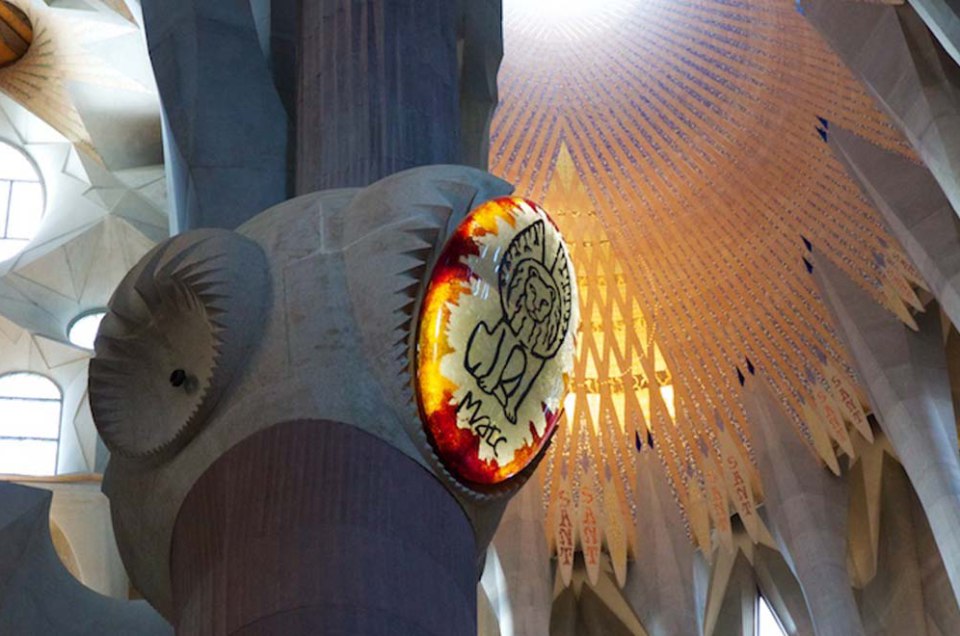
The large columns that support the main structure are dedicated to the apostles; here, Mark the Evangelist is depicted with his symbol, the winged lion.
Decorative details of interior and exterior elements of the Sagrada Família are rich in symbols. Gaudí viewed sculpture as integral to the composition of the entire project and planned it accordingly. The west-facing passion facade, for instance, is stark and simple in the light of the setting sun in contrast to the ornate nativity facade and its focus on new life; the former contains only sculptures depicting the death of Christ, with no additional ornamentation. The 18 bell towers symbolize Jesus, the Virgin, the four evangelists and the 12 apostles, while large interior columns represent the apostles and the churches of the world.
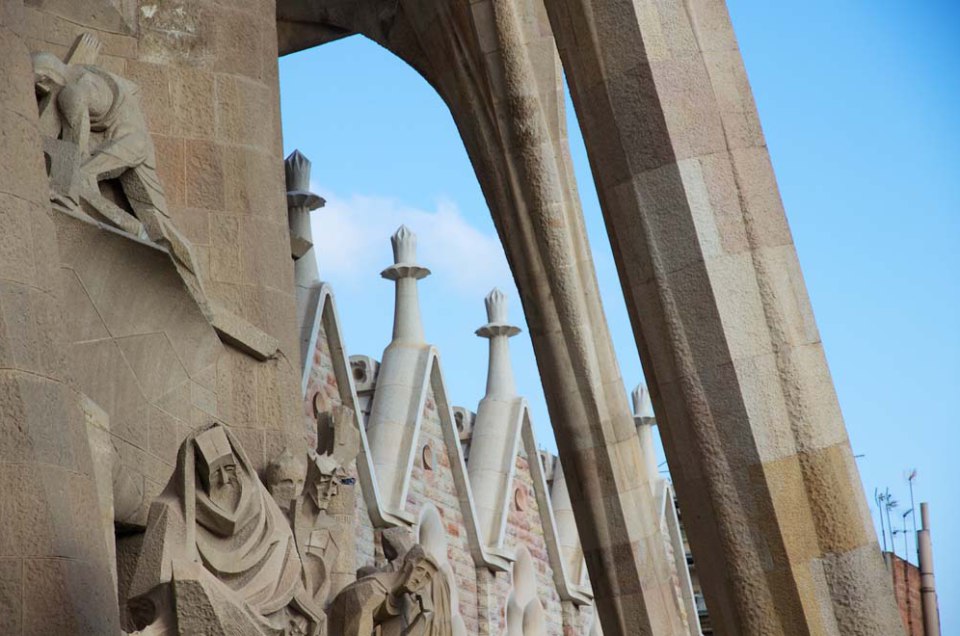
Detail of the passion facade, showing sculptures by artist Josep Maria Subirachs, completed between 1986 and 2005.
The Basílica i Temple Expiatori de la Sagrada Família – a mouthful that translates to “the Basilica and Expiatory Church of the Holy Family” – is more than just a church, even more than just a cathedral, which is what it resembles more, though it can’t be called that since it doesn’t house a bishop. It’s a work of art and, even more fascinating, a work of art in progress, being completed over generations in an old-fashioned style that just doesn’t seem to happen much these days.
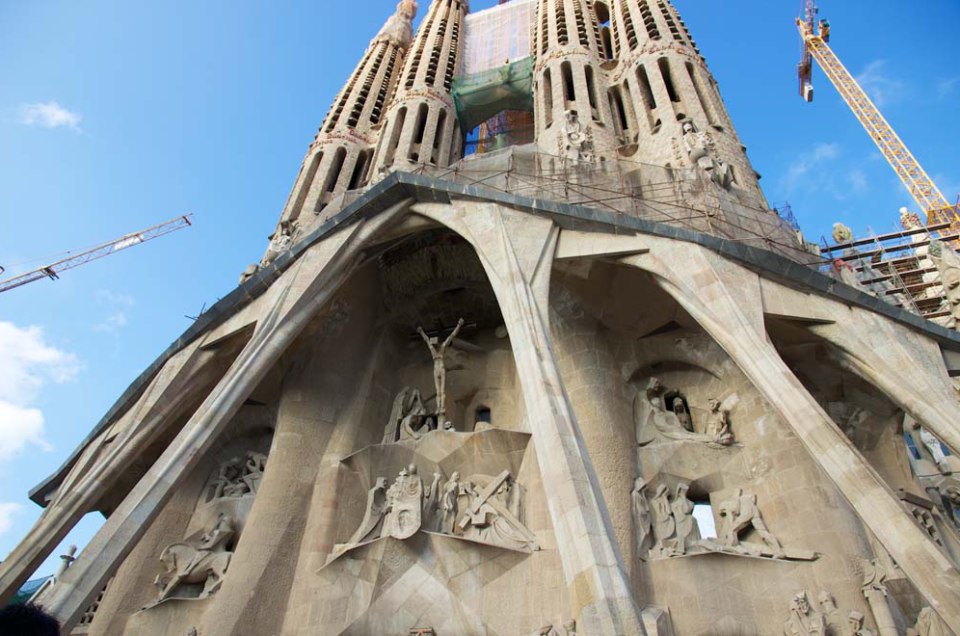
The west-facing passion facade, dedicated to the passion, death and resurrection of Christ.
Visible at top right, towers are topped with fruit-like decoration, an example of Gaudi’s fascination with shapes from nature.
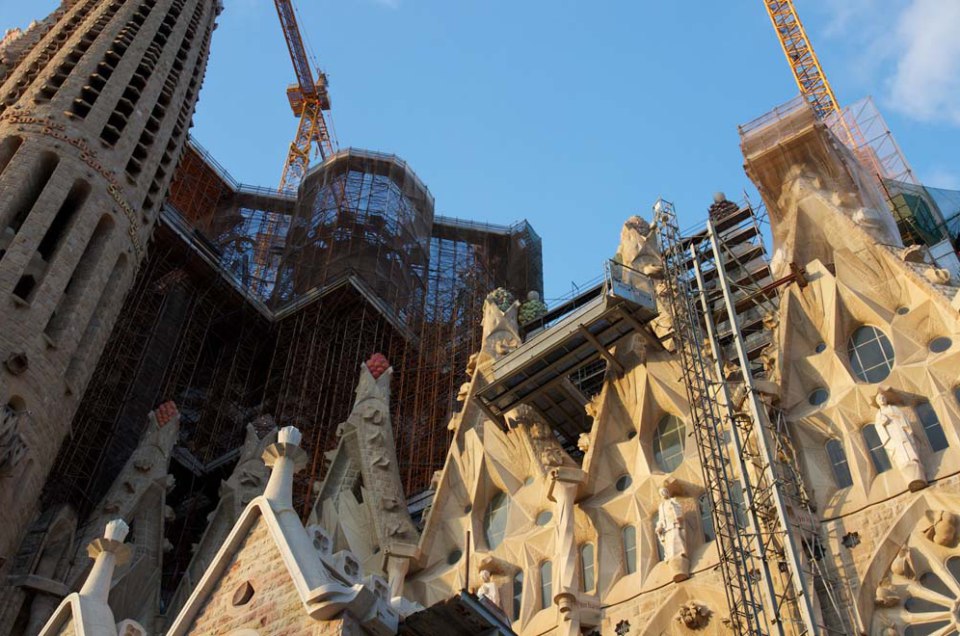
The west-facing facade, with the word "Sanctum" – Latin for "holy place," or "sanctuary" – repeated around one of the four main towers.
While the church was originally intended to be in the neo-Gothic style, reminiscent of much of Barcelona’s architecture, Gaudí discarded this idea in favor of a newer, more innovative and grander style that improved upon what he saw as the flaws in Gothic architecture, especially the fact that such buildings were structurally vulnerable.
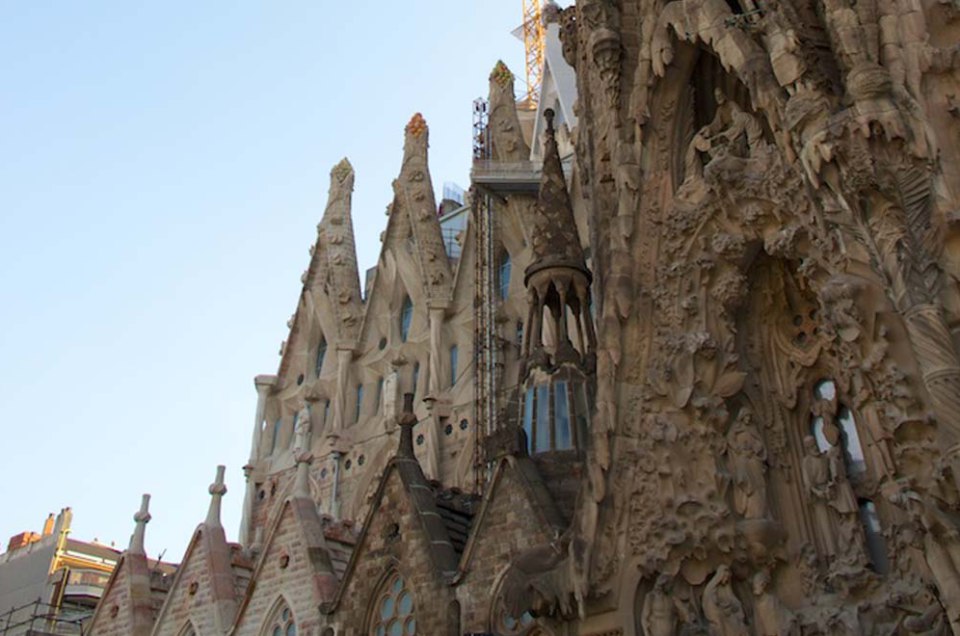
The east-facing nativity facade.
Gaudí’s focus during his lifetime was on the ornate nativity facade, which faces east and is made up of four towers with three doorways. Dedicated to the birth of Jesus, it contains sculptures depicting such Christian imagery as the holy trinity; the three kings bearing gold, frankincense and myrrh; and angels proclaiming the birth, as well as plant and animal elements.

Typical stained glass.
Gaudí’s original plans and some models were lost during the Spanish Civil War in the late 1930s, and some advocate leaving the Sagrada Família unfinished due to this, as they claim we can no longer know Gaudí’s true intent for the completion of the church. But supporters counter that Gaudí always intended for the project to be a community one, rather than the work of an individual, and construction is scheduled to be done in 2026 or 2028, a century after Gaudí’s death.
The Sagrada Família contains 22 kinds of stone, including six used at the time construction began and chosen based on three properties: durability, resistance and color. The first kind used was local Montjuïc stone, which makes up the bulk of the exterior, including major features of the passion and nativity facades. Since the closure of the Montjuïc stone quarries in the 20th century, builders have had to source stone from donations, demolitions and stockpiles. Gaudí chose specific types of stone for certain features, including the interior columns.
Other Voices you might like
Kristin Luna
Writer, Photographer, World Traveler
Glen Gilmore
Luxury Travel
Keryn Means
Family Travel Blogger